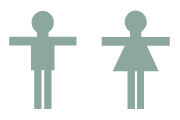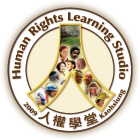
|
 Satellite imagery can be used to violate human rights, or to protect them Satellite imagery can be used to violate human rights, or to protect them
In 1988, during the waning days of Iraq’s war with Iran, the United States learned through satellite imagery that Iran was about to gain a major strategic advantage by exploiting a hole in Iraqi defenses. U.S. intelligence officials conveyed the location of the Iranian troops to Iraq, fully aware that [Saddam] Hussein’s military would attack with chemical weapons, including sarin, a lethal nerve agent.
The intelligence included imagery and maps about Iranian troop movements, as well as the locations of Iranian logistics facilities and details about Iranian air defenses. The Iraqis used mustard gas and sarin prior to four major offensives in early 1988 that relied on U.S. satellite imagery, maps, and other intelligence.
U.S. officials have denied knowledge or approval of Iraqi chemical weapon strikes in the years since the conflict. But retired Air Force Col. Rick Francona, who was in Baghdad during the 1988 strikes, told Foreign Policy that U.S. satellite imagery showed Iraqi movements of chemical weapons into position ahead of each offensive against Iran.
Satellite imagery tech, then, was used to provide support to attacks that the images showed would involve grave human rights violations.
But satellite imagery can also be used to increase awareness of human rights violations. For instance, a Yale study identified how changes in vegetation could help identify instances of genocide in Darfur. Similarly, actor George Clooney joined forces with the anti-genocide activists at the Enough Project and satellite imagery company DigitalGlobe to launch the Satellite Sentinel Project, which tracks human rights abuses as they happen. (Full disclosure: The Enough Project is associated with my former employer the Center for American Progress.) Clooney has called the effort “the antigenocide paparazzi.”
Of course, satellite imagery, as with almost all technology, is neutral. The morality of its use is defined by how it is deployed and to what end. The Foreign Policy report raises concerns about the U.S. government’s role in how intelligence gathered through satellite imagery was used in the Iraq-Iran conflict. But as the technology becomes more accessible to consumer and nonprofit actors, there’s plenty of potential for using it as a powerful tool to increase accountability.
Update: Our WorldViews colleague Max Fisher had some thoughts about Foreign Policy’s article we want to share:
It’s worth noting that academic studies, not to mention U.S. government documents released in 2003, had long ago revealed that the U.S. knew that Iraq was deploying chemical weapons against Iran and still provided Saddam Hussein with intelligence assistance. The CIA documents released this week add important new documentation to that, but the timing of their release – as the U.S. considers whether or how to respond to Syrian chemical weapons use – and their portrayal as revelatory has generated significant controversy in U.S. foreign policy circles.
(2013-08-26/washingtonpost)
|





